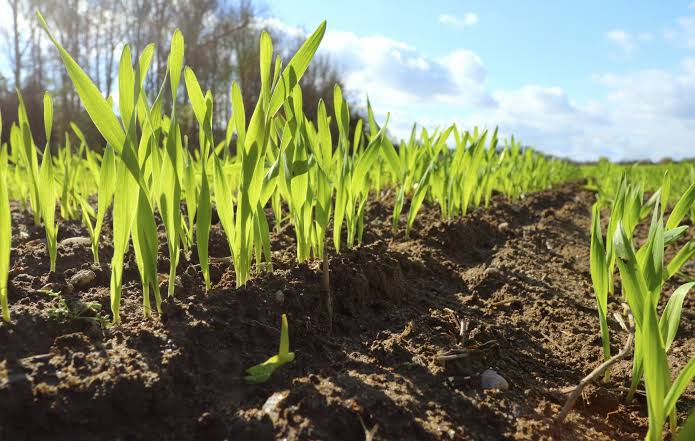- Books Name
- CBSE Class 7 Science Book
- Publication
- Param Publication
- Course
- CBSE Class 7
- Subject
- Science
SOIL AND CROPS
• In different parts of India, different types of soils are found.
• Soil profile and soil structure both are affected by some climatic factors i.e. temperature, light, humidity, wind velocity, rainfall etc.
• Climatic factors, various components of soil determine various types of vegetation and crops in particular region. Clayey and Loamy soils are suitable for cereals like wheat as soil can retain water, rich in humus and is very fertile. For paddy, clayey soil rich in organic matter is good as it can retain good amount of water for long duration. Loamy soils, which drain water easily are required for lentils or masoor. For cotton, sandy-loam or loam, which drain water easily required as it can hold plenty of air.
SOIL EROSION
• Removal of top soil by water, wind or ice is called soil erosion.
• Plant can check soil erosion as their roots firmly bind the soil. That’s why soil erosion is more in those areas having little or no surface vegetation, like desert or bare land.
• Cutting of trees and deforestation should be prevented in order to check soil erosion.
SOIL MOISTURE
• The amount of water held by a soil is called soil moisture. Moisture content of soil can be calculated by formula :-

ALLUVIAL SOIL
• The soil which is formed by deposition of material i.e. silt, clay, sand and gravels carried by rivers called alluvial soil. For eg. soil of North Indian plains formed by rivers of North India which flows from Himalayas. Such soil is very fertile and supports half the population of India.
Prevention of soil erosion
Soil Conservation
The methods are as follows:
(a) Afforestation should be undertaken not only in the areas where green cover is already removed but additional areas should be brought under plantation.
(b) To reduce the effect of strong winds in the fields, trees should be planted along the boundaries of the fields.
(c) Crop rotation
(d) Proper drainage and irrigation arrangements should be made.
(e) Terrace cropping
Soil and crops

Agriculture is the backbone of Indian economy, and soil plays a very important in it. Different types of crops requires suitable soils for their growth and cultivation. Soil is a significant natural resource. Soil can be categorised into different types, each with distinct characteristics that provide crop growing benefits and limitations.
Various types of soil are present in distinct parts of India. Soil is mostly affected by wind, rainfall, temperature, light and humidity. Several climatic factors also affect the soil profile and bring transitions in the soil structure. The factors mentioned above that affect the soil influence vegetation in an area. Vegetation area can be forest, grassland, tundra, desert, and ice sheet. Vegetation is mostly in the fertile upper soil of the earth and covers the soil like a green sheet spread on its surface

 Param Publication
Param Publication
 Grow Career Publication
Grow Career Publication
